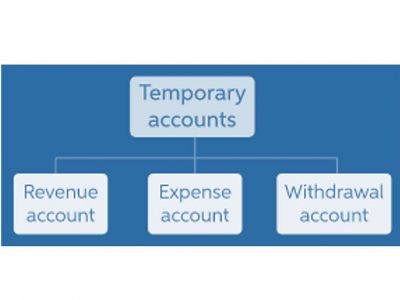Horizontal Analysis And Vertical Evaluation
Collectively, they supply a balanced overview, important for accurate monetary reporting and evaluation within monetary institutions. In phrases of data comparability strategies, vertical analysis uses proportional relationships within a period, making it useful for understanding structural composition. Horizontal analysis emphasizes share changes over time, illuminating developments very important for monetary institutions’ decision-making. Each are essential in financial reporting however serve distinct evaluative functions. These techniques offer distinctive views on a company’s monetary well being, performance, and tendencies. In vertical and horizontal analysis, monetary ratios assist interpret the information and draw significant conclusions a couple of company’s financial performance over time.
- If the accounts payable are $88,000 they are going to be restated as 22% ($88,000 divided by $400,000).
- © 2025 Anamma – Monetary methods, investment suggestions, and market analysis to help you obtain financial independence and multiply your wealth.
- The major objective of horizontal analysis is to establish trends, patterns, and fluctuations in financial efficiency.
- Vertical evaluation restates each amount within the earnings statement as a percentage of gross sales.
- By examining historical data, monetary establishments can detect adjustments in revenue, bills, or asset values over time.
- Furthermore, vertical evaluation facilitates the comparison of financial statements of firms of different sizes.
Comparison
Moreover, vertical analysis simplifies the process of benchmarking in opposition to industry standards or peer establishments. This comparative strategy helps better decision-making by highlighting areas of strength or weakness when considered by way of a constant, percentage-based lens. This helps in pinpointing operational strengths or early warning signs of financial points. This holistic method enhances decision-making by offering a more full monetary narrative.
Comparability Chart
Reviewing these comparisons allows management and accounting employees at the firm to isolate the explanations and take action vertical and horizontal analysis to repair the problem(s). To put together a vertical evaluation, you choose an account of interest (comparable to whole revenue) and categorical different balance sheet accounts as a share. For instance, you could present merchandise inventory or accounts receivable as a share of total assets. Together, these analyses strengthen financial reporting by providing a layered perspective.
Monetary Evaluation is useful in precisely ascertaining and forecasting future tendencies and circumstances. The major purpose of horizontal evaluation is to compare line gadgets in order to verify the modifications in development over time. As towards, the purpose of vertical evaluation is to ascertain the proportion of merchandise, in relation to a typical merchandise in share terms. In Horizontal Financial Analysis, the comparison is made between an item of economic statement, with that of the bottom year’s corresponding merchandise. On the other hand, in vertical monetary analysis, an merchandise of the financial statement is in contrast with the frequent merchandise of the same accounting interval. This technique aids in detecting revenue development and guiding companies to understand their monetary path.
Likewise, listed below are some frequent monetary ratios used in each monetary analyses. Vertical evaluation entails calculating percentages of line objects based on a base figure for a period. This makes financial information simple to compare and understand, displaying how an organization operates and makes money. Horizontal and vertical analysis are key for checking a company’s monetary health. Horizontal evaluation detects adjustments and developments, mentioning robust or weak spots. Vertical evaluation reveals how elements of economic statements relate to each other.
All of the amounts on the balance sheets and the revenue statements will be expressed as a percentage of the bottom 12 months amounts. The quantities from the newest years might be divided by the base https://www.online-accounting.net/ yr amounts. For instance, if a most up-to-date year quantity was 3 times as large as the base yr, the latest year might be offered as 300. If the previous year’s amount was twice the amount of the bottom year, it goes to be offered as 200.
Merely reviewing an Earnings Statement or Steadiness Sheet typically makes it hard to determine tendencies over time or compare corporations of various sizes. These strategies assist users interpret monetary info clearly and make significant comparisons. Combining each vertical and horizontal analyses offers a robust framework for financial modeling. Vertical evaluation provides a snapshot of the present financial health, which serves as a baseline for future projections.
Depending on their expectations, Mistborn Buying And Selling may make choices to alter operations to supply expected outcomes. For instance, MT noticed a 50% accounts receivable enhance from the prior year to the current yr. If they have been only expecting a 20% enhance, they might need to explore this line merchandise additional to find out what caused this distinction and how to appropriate it going forward.
Vertical evaluation reveals a comparability of a line merchandise within a statement to a different line merchandise within that same assertion. For instance, a business may examine money to total property in the present year. This permits a enterprise to see what share of money (the comparison line item) makes up whole belongings (the other line item) through the interval.
For example, a company may discover that its price of products offered represents the next percentage of web gross sales compared to business averages, indicating potential inefficiencies within the production course of. Vertical analysis facilitates understanding of every monetary assertion element relative to a base figure, similar to whole property or gross sales. This normalization allows for higher comparability throughout intervals and with other establishments, aiding in clarity and consistency. By integrating vertical and horizontal analysis, financial establishments can get hold of a nuanced understanding of their monetary well being. This combined strategy improves the accuracy of economic forecasts, risk assessments, and efficiency benchmarking. In The End, these analyses serve as important tools, serving to institutions optimize operations and keep regulatory compliance.
This comparative methodology provides perception into performance trajectories, enabling higher strategic decision-making. Vertical and horizontal analysis differ primarily of their focus and methodology inside monetary reporting. Vertical evaluation examines the relationship of every line item to a base figure inside a single period, sometimes expressed as a proportion. This approach permits comparison across totally different accounts relative to whole belongings, gross sales, or different key figures, offering a snapshot of economic structure.












